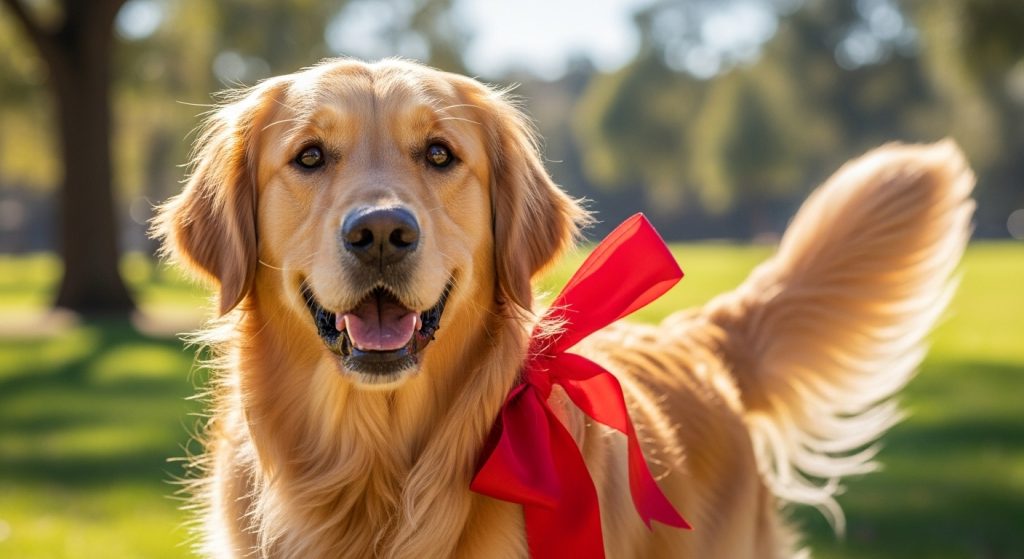Understanding your dog goes far beyond teaching commands or giving treats. Dogs are constantly communicating with us through their body language — their ears, tails, eyes, and even the way they sit or move. As a dog owner, learning how to read these subtle signs can help you deepen your bond, prevent behavioral issues, and ensure your furry companion feels safe and understood.
In this article, we’ll break down dog body language into three major categories: happy and relaxed signals, stress and anxiety signs, and warning and aggressive signals. By the end, you’ll be able to “read” your dog like a pro.
Recognizing Happy and Relaxed Dog Body Language
A relaxed and happy dog is easy to spot once you know what to look for. These signs show your dog is comfortable and enjoying the environment.
1. Tail Wagging (but not always what you think!)
Most people assume a wagging tail means a happy dog. That’s true in many cases, but not all tail wags are equal. A broad, loose wag that moves the entire body is a classic sign of joy. If the tail wag is stiff or only moves slightly, it may signal alertness or agitation.
2. Soft Eyes and Relaxed Face
When your dog’s eyes look soft, blinking slowly, with no tension in the brow, it means they are calm. Dilated pupils, on the other hand, might indicate excitement or even fear.
3. Play Bow
If your dog stretches its front legs forward while keeping the rear end in the air, that’s a classic “play bow.” It’s an invitation to interact, chase, or wrestle.
4. Loose and Wiggly Movements
Happy dogs often move their whole body in a bouncy, wiggly way. They may roll over to show their belly, not as submission, but as trust and relaxation.
5. Ears in a Natural Position
When relaxed, a dog’s ears will sit naturally — not pinned back in fear, not perked stiffly in alertness.
By noticing these subtle cues, you’ll know when your dog feels safe and joyful.
Identifying Stress and Anxiety in Dogs
Just like humans, dogs experience stress and anxiety. Recognizing these signs early can help you provide comfort and avoid escalation into problematic behaviors.
1. Panting and Lip Licking
Dogs pant to cool down, but if it’s happening indoors or without exertion, it could be stress. Frequent lip licking, yawning, or tongue flicks are classic signs of unease.
2. Pacing or Restlessness
If your dog can’t settle, constantly moving back and forth, it’s often a sign of anxiety. This is common during thunderstorms, fireworks, or separation.
3. Tucked Tail and Lowered Body Posture
When stressed, many dogs tuck their tails tightly under their body. Their overall posture may shrink as if they’re trying to make themselves smaller.
4. Avoidance Behaviors
Turning the head away, refusing eye contact, or trying to hide behind furniture are clear indicators your dog feels uncomfortable.
5. Ears Pinned Back and Whale Eye
When the whites of a dog’s eyes are visible (known as “whale eye”), it means stress. Combined with pinned ears, it’s a signal that your dog is overwhelmed.
By recognizing these anxiety cues, you can adjust the environment — whether it’s removing stress triggers, offering enrichment toys, or creating a safe space.
Warning and Aggressive Dog Body Language
Sometimes, dogs display body language that warns of aggression or the need for space. Reading these signals early can prevent bites and ensure safety.
1. Growling and Showing Teeth
Growling is often misunderstood. It’s not “bad behavior” but a warning. When a dog shows teeth or growls, they are saying: “I’m uncomfortable, please back away.” Respecting this signal prevents escalation.
2. Stiff Posture and Direct Staring
An aggressive dog will often freeze with a very stiff body. Unlike relaxed wagging, this type of stillness is a warning. Direct, hard stares also indicate defensive or offensive aggression.
3. Raised Hackles (Piloerection)
The fur along the back and neck standing up means the dog is on high alert. It doesn’t always mean aggression — it could also signal extreme excitement — but in combination with other cues, it’s a red flag.
4. Snapping or Lunging
When ignored, warning signals can escalate to snapping or lunging. This is a last resort after the dog feels other communication has failed.
5. Vocalizations (Deep Barking)
A deep, sharp bark often signals territorial defense or an attempt to warn off perceived threats.
Learning to recognize these warning signals can keep both you and your dog safe. The key is to respect the dog’s space and avoid punishment for growling or showing teeth — these are healthy communication tools.
Reading your dog’s body language is a skill every owner can learn. By observing their happy cues, recognizing stress signals, and respecting warning signs, you’ll build a deeper bond with your furry companion while preventing misunderstandings.
When you tune in to your dog’s body language, you’re not just becoming a better owner — you’re becoming your dog’s trusted partner.




